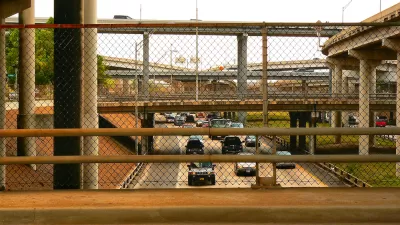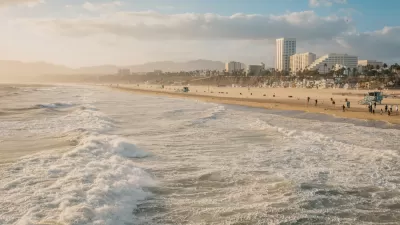Despite calls to center equity in infrastructure projects, highway construction and expansion still disproportionately impacts communities of color, according to a Los Angeles Times investigation.

Despite the well-documented negative impacts of highway construction on Black and brown neighborhoods and the growing influence of the highway removal movement, write Liam Dillon and Ben Poston, "a Los Angeles Times investigation has found that widenings, extensions and other freeway construction continue to take a significant toll on communities even now."
The investigation found that over 200,000 people have lost their homes in the last three decades, with the real number projected to be much higher. According to the article, "a review of records detailing some of the country’s largest highway projects shows that expansions of existing freeways through cities have inflicted a second round of dislocation and disruption on largely Black and now Latino communities as well."
Dillon and Poston detail some of the current or recently completed projects that are still displacing communities of color in cities including Houston, Tampa, and Gulfport, Mississippi. Around the country, projects like Shreveport's planned Interstate 49 connector project continue to threaten historic Black neighborhoods even as advocates call for a focus on equity in infrastructure projects.
The article notes that "[t]oday, displaced families receive substantial financial assistance to find new housing, a marked contrast with the earlier era of highway construction when they often got little in return for their loss." Still, many residents don't want to relocate, and critics of highway expansion point out that wider roads also contribute to climate change and reduce urban air quality. Although the Biden administration has advocated for less highway construction, the recently passed infrastructure bill provides $350 billion in road funding which could be used for new or expanded freeways.
FULL STORY: Freeways force out residents in communities of color — again

Trump Administration Could Effectively End Housing Voucher Program
Federal officials are eyeing major cuts to the Section 8 program that helps millions of low-income households pay rent.

Planetizen Federal Action Tracker
A weekly monitor of how Trump’s orders and actions are impacting planners and planning in America.

Ken Jennings Launches Transit Web Series
The Jeopardy champ wants you to ride public transit.

‘Smart Surfaces’ Policy Guide Offers Advice for Building and Maintaining Urban Tree Canopies
Healthy, robust tree canopies can reduce the impacts of extreme heat and improve air quality.

New Jersey Lawsuit Targets Rent-Setting Algorithms
The state of New Jersey is taking legal action against landlords and companies that engage in what the state’s Attorney General alleges is illegal rent fixing.

Washington Legislature Passes Rent Increase Cap
A bill that caps rent increases at 7 percent plus inflation is headed to the governor’s desk.
Urban Design for Planners 1: Software Tools
This six-course series explores essential urban design concepts using open source software and equips planners with the tools they need to participate fully in the urban design process.
Planning for Universal Design
Learn the tools for implementing Universal Design in planning regulations.
Heyer Gruel & Associates PA
Ada County Highway District
Institute for Housing and Urban Development Studies (IHS)
City of Grandview
Harvard GSD Executive Education
Toledo-Lucas County Plan Commissions
Salt Lake City
NYU Wagner Graduate School of Public Service





























